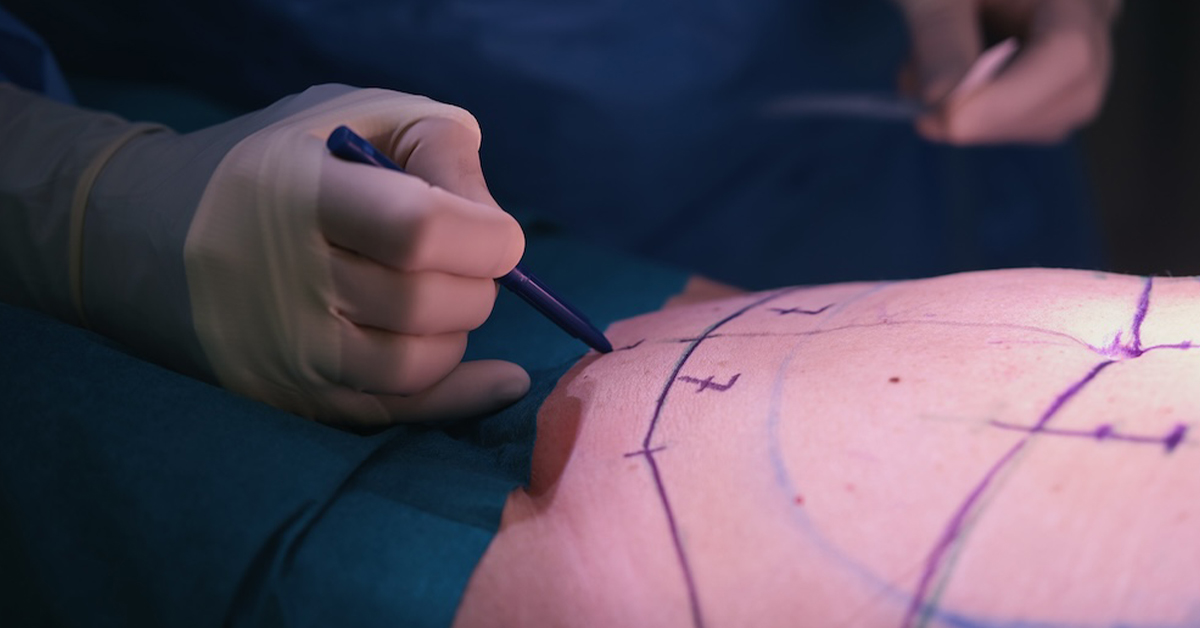What Is a Mini Tummy Tuck?
Are you struggling with excess abdominal skin and stubborn fat that just won’t go away despite your efforts? If so, a Mini Tummy Tuck may be the solution you’ve been searching for.
In this article, we’ll explore the ins and outs of the Mini Tummy Tuck procedure, its benefits, recovery process, and more. Whether you’re considering a Mini Abdominoplasty or simply curious about the procedure, read on to discover how it can help you achieve a toned abdomen and boost your confidence.
Understanding the Mini Tummy Tuck Procedure
What is a Mini Tummy Tuck?
A Mini Tummy Tuck, also known as a partial Abdominoplasty, is a cosmetic surgical procedure designed to target the lower abdomen. Unlike a Full Tummy Tuck, which addresses both the upper and lower abdomen, a Mini Abdominoplasty focuses primarily on the area below the belly button. It is an ideal choice for individuals who have localized excess skin and fat in the lower abdominal region.
Who is a suitable candidate for a Mini Tummy Tuck?
A Mini Tummy Tuck is suitable for individuals who are in good overall health and have realistic expectations about the outcome of the procedure. It is particularly beneficial for those who have lost a significant amount of weight or experienced changes in their abdominal area due to pregnancy or aging.
However, it’s important to consult with a plastic surgeon to determine if you are an ideal candidate for this procedure.
Key differences between a Mini Tummy Tuck and a Full Tummy Tuck
A Mini Tummy Tuck and a Full Tummy Tuck are two distinct procedures that address different aspects of the abdomen. One of the key differences lies in the extent of treatment. A Mini Abdominoplasty focuses on the lower abdomen, specifically below the belly button, targeting excess skin and fat in that area.
On the other hand, a Full Tummy Tuck addresses both the upper and lower abdomen, providing a more comprehensive solution by addressing excess skin, fat, and lax abdominal muscles throughout the entire abdominal region.
Another important difference between the two procedures is the size and placement of the incisions. A Mini Abdominoplasty involves a smaller incision, typically located just above the pubic region. The incision is designed to be easily concealed and results in less noticeable scarring.
In contrast, a Full Tummy Tuck requires a longer incision that extends from hip to hip, with a potential second incision around the belly button. The larger incision and extended treatment area result in a longer scar, although it can often be hidden beneath clothing or swimwear.
Benefits of Mini Tummy Tuck Surgery
Improved abdominal contour
One of the main benefits of undergoing this procedure is the improvement in abdominal contour. The procedure helps to tighten the muscles and remove excess skin and fat, resulting in a flatter and more toned appearance. It can effectively address issues such as a protruding belly, stretch marks, and loose skin.
Reduction of excess skin and stretch marks
Another advantage of this surgery is the reduction of excess skin and stretch marks. These common concerns often arise after significant weight loss or pregnancy, and they can be difficult to address through diet and exercise alone. The surgical removal of excess skin and the tightening of the abdominal muscles can help create a smoother and more youthful abdominal area.
Enhanced self-confidence and body image
Beyond the physical changes, a Mini Tummy Tuck can have a positive impact on one’s self-confidence and body image. Many individuals who have struggled with excess abdominal skin and a lack of muscle tone experience a boost in self-esteem following the procedure. Feeling more comfortable and confident in their appearance can have a transformative effect on various aspects of their lives.
Preparing for a Mini Tummy Tuck
Consultation with a plastic surgeon
A thorough consultation with a qualified plastic surgeon is crucial when preparing for a Mini Tummy Tuck. This initial meeting allows you to discuss your goals, concerns, and expectations regarding the procedure. The surgeon will carefully evaluate your medical history, including any previous surgeries and existing health conditions, to determine your candidacy for the surgery.
It is essential to maintain open and honest communication during this consultation to ensure that the surgeon understands your desired outcomes and can provide you with realistic expectations.
Medical evaluation and health considerations
As part of the preparation process, you will undergo a comprehensive medical evaluation. This evaluation helps the surgeon assess your overall health and identify any potential risks or complications associated with the procedure. Factors such as your weight, previous surgeries, and existing medical conditions will be taken into account.
It is important to provide accurate information about your health to the surgeon, as this will enable them to develop a personalized surgical plan and minimize any potential risks. Additionally, you will be given preoperative instructions to follow, such as adjusting medications, quitting smoking, or avoiding certain foods or supplements, to ensure optimal safety and results.
Discussion of expectations and desired outcomes
During the consultation, it is essential to have a candid discussion about your expectations and desired outcomes from the Mini Abdominoplasty. Share your goals for the procedure, whether it’s achieving a flatter abdomen, improving muscle tone, or enhancing your overall body contour. The surgeon will provide their expertise and guide your expectations, explaining what can realistically be achieved through the surgery.
It’s important to have a clear understanding of the potential results, including the limitations of the procedure. By openly discussing your expectations, the surgeon can tailor the surgical plan to meet your goals while ensuring a safe and satisfactory outcome.
Recovery and Postoperative Care:
Pain management:
During this time, pain management techniques and medications will be provided to help alleviate any discomfort. Your surgeon and medical staff will closely monitor your progress and address any concerns that may arise. Instructions will be given regarding the care of your surgical incisions, including proper hygiene and dressing changes, to promote healing and reduce the risk of infection.
Wearing compression garments:
Wearing compression garments is an integral part of the recovery process after a Mini Tummy Tuck. These specially designed garments provide support to the treated area, minimize swelling, and promote proper healing.
Your surgeon will advise you on the duration and frequency of wearing compression garments, which may vary depending on individual factors. It is important to follow their instructions and properly care for the garments, ensuring they are clean and well-fitted for optimal effectiveness.
Follow-up appointments and monitoring:
Regular follow-up appointments with your surgeon are essential for monitoring your progress and ensuring proper healing. These appointments provide an opportunity to assess the recovery of your abdominal area, remove any sutures if necessary, and address any concerns or questions you may have.
Your surgeon will also monitor for signs of infection or other complications, allowing for prompt intervention if needed. It is important to attend all scheduled follow-up appointments and communicate openly with your surgeon about your recovery process.
Resuming normal activities and exercise:
During the recovery period, it is important to gradually resume your normal activities and exercise routine according to your surgeon’s guidelines. Initially, you will be advised to avoid strenuous activities and heavy lifting to prevent strain on the abdominal area.
Your surgeon will provide a recommended timeline for gradually increasing your activity levels, including when you can start exercising again. It is important to listen to your body and communicate any discomfort or limitations experienced during the recovery process with your surgeon.
They will guide you on how to safely and effectively resume your normal activities and exercise routine, taking into consideration your individual healing progress.
Potential Risks and Complications:
Infection and bleeding
As with any surgical procedure, there is a potential risk of infection and bleeding. Your surgeon will take precautions to minimize these risks, such as using sterile techniques during the surgery and prescribing antibiotics.
It’s important to closely follow postoperative care instructions, including proper wound care, to reduce the risk of infection. In rare cases, excessive bleeding may occur, but your surgeon will take measures to control bleeding during and after the procedure.
Scarring and skin discoloration
Scarring is an inevitable part of any surgical procedure, including a Mini Tummy Tuck. Your surgeon will employ techniques to minimize scarring, such as making well-placed incisions and using suturing methods that promote proper wound healing.
However, individual factors can affect how your body heals and the appearance of scars. Temporary skin discoloration, such as redness or pigmentation changes, may also occur during the healing process. Over time, scars usually fade and become less noticeable.
Sensation changes in the abdominal area
After a Mini Abdominoplasty, you may experience temporary or permanent changes in sensation in the abdominal area. This can manifest as numbness, tingling, or hypersensitivity. It is a normal part of the healing process as the nerves regenerate.
In most cases, sensation gradually returns over time, but rare instances of persistent sensation changes may occur. Your surgeon will provide guidance on managing these sensations during the recovery period.
Blood clots and fluid accumulation
There is a risk of blood clots, known as deep vein thrombosis (DVT), forming in the legs following surgery. To mitigate this risk, your surgeon will recommend early ambulation, leg exercises, and may prescribe blood thinners.
Another potential complication is fluid accumulation, called a seroma, which can cause swelling. Your surgeon may use drainage tubes or compression garments to prevent or address seroma formation. By following postoperative instructions and staying vigilant for any signs of complications, you can reduce the risks associated with blood clots and fluid accumulation.
While these risks and complications are possible, it’s important to remember that they occur infrequently. By choosing a skilled and experienced surgeon, adhering to postoperative care instructions, and maintaining open communication throughout the recovery process, you can help minimize these potential risks and enhance your overall safety and satisfaction with the Mini Abdominoplasty procedure.
Conclusion
A Mini Tummy Tuck is an effective surgical option for individuals seeking to improve the appearance of their lower abdomen. With its ability to address excess skin, stubborn fat, and muscle laxity, this procedure can provide a flatter and more toned abdominal contour.
By understanding the procedure, preparing appropriately, and following postoperative care instructions, you can achieve optimal results and boost your self-confidence.
Scheduling a Tummy Tuck in Miami, FL
If you’re interested in learning more about a Tummy tuck and want to take the first step, we encourage you to schedule a consultation with us. To make an appointment or to find out more information, you can call us at (305) 406-9055 or conveniently schedule a consultation online.
We’re here to address any questions or concerns you may have and guide you through the process.







